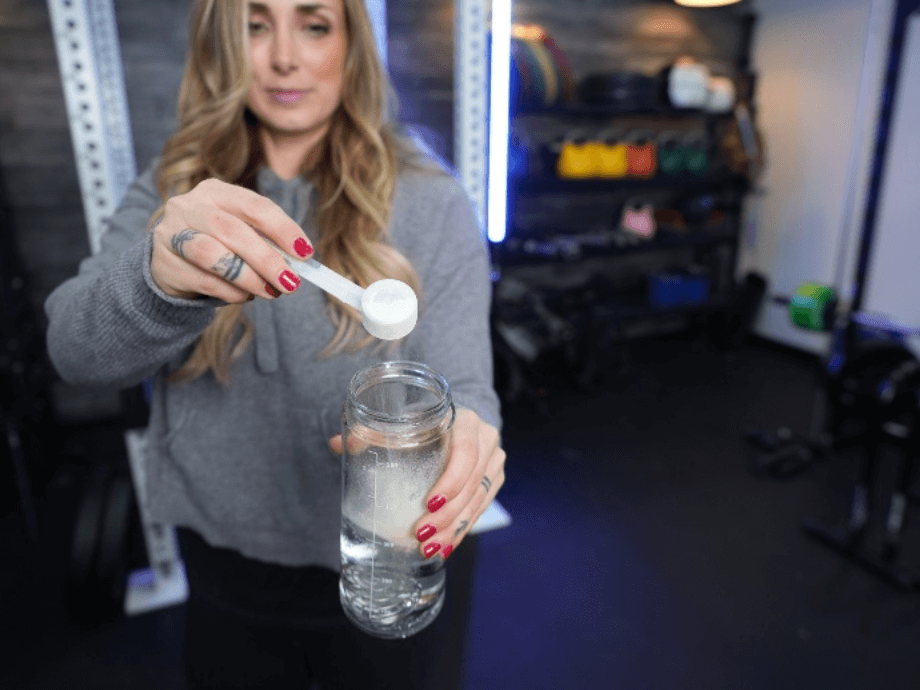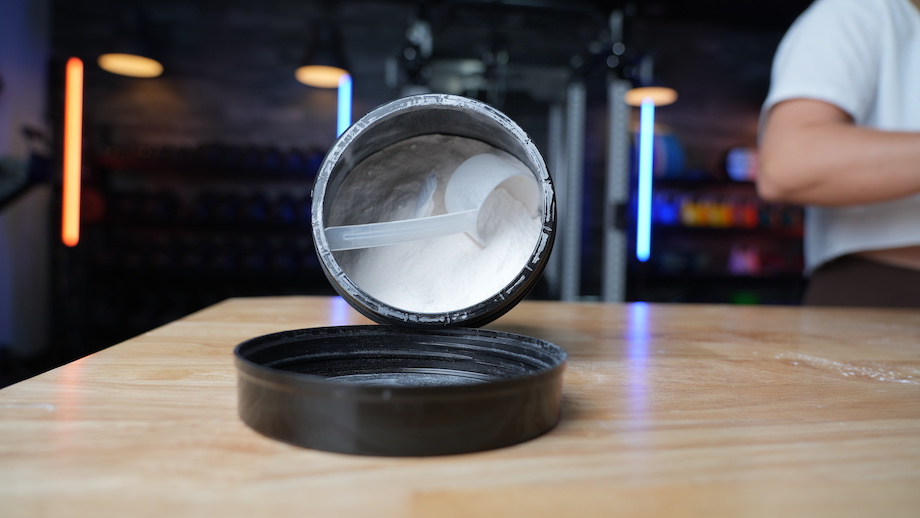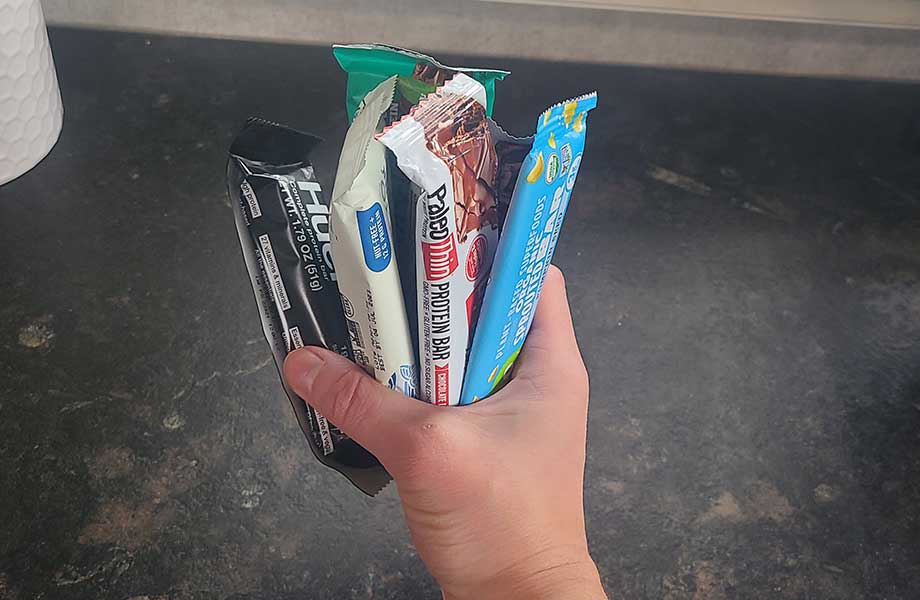I’ve got good news—and I’ve got bad news. And since I’m the type who always wants the bad news first, let’s start there.
The truth is, the gut microbiome is a complex and layered topic. With about 100 trillion (yes, trillion, with a T!) microorganisms living in your gastrointestinal tract, it’s no wonder researchers are still piecing together the role of the gut microbiota in nutrition and health1.
Now, for the good news: even though gut health can seem overwhelming, science has come a long way. And while learning how to improve your gut microbiome takes more than popping open the best prebiotic sodas, you don’t have to get lost in all the gut health chatter.
As a registered dietitian, I’ll walk you through a practical, easy-to-digest guide to help you take better care of your gut. (Just one friendly reminder: don’t forget to loop in your healthcare provider, too!)
Key Takeaways
- The gut microbiome is a community of microbes that plays a major role in digestion, immunity, mood, and overall health.
- Eating a variety of whole, plant-based foods—especially those rich in probiotics, prebiotics, fiber, and polyphenols—helps support a balanced and diverse microbiome.
- Adequate hydration, regular exercise, sleep hygiene, and stress management are just as important for gut health as the foods you eat.
What Is the Gut Microbiome?
The gut microbiome refers to the trillions of microorganisms—including bacteria, viruses, fungi, and protozoa—that live in your digestive tract. Often referred to as a “virtual organ,” this community plays a crucial role in various aspects of health1.
Now, you might be thinking, “Wait… Aren’t bacteria and the like bad for us?” While a fair question, the answer isn’t exactly black and white. However, you’ll often hear about two types of bacteria: good and bad bacteria. While simplistic, it can help us better understand the delicate balance at play.

Beneficial “good” microbes support a healthy digestive system, immune function, and overall health. When the balance of the human gut microbiota2 is disrupted and altered—a condition known as dysbiosis—it can trigger inflammation, metabolic issues, and even chronic disease. This imbalance may stem from factors such as a poor diet, illness, stress, and antibiotic use.
All to say, when your gut microbiome is in balance, your whole body can benefit.
Why is Gut Health Important?
A healthy gut plays a vital role in how your body functions—from digestion and nutrient absorption to immune support and disease protection. Here’s why taking care of your gut microbiome matters.
Nutrient Absorption and Production
Intestinal microbiota3 help produce essential micronutrients, such as vitamin K and B vitamins. They also help increase the bioavailability of minerals, such as calcium and iron, allowing your body to absorb and use them more effectively. This is essential for various functions from energy production to bone health and overall wellness, among others.
Immune Support
A large part of your immune system lives in the gastrointestinal (GI) tract, where immune cells are in constant communication with your gut microbiota. A 2022 review4 notes this close relationship helps shape your body’s immune responses, supports the development of immune cells, and defends against harmful pathogens.
Brain and Mental Health
Your gut and brain are constantly communicating via the gut–brain axis5. Gut microbes help regulate neurotransmitters like serotonin and GABA, which influence mood, stress levels, and sleep6.
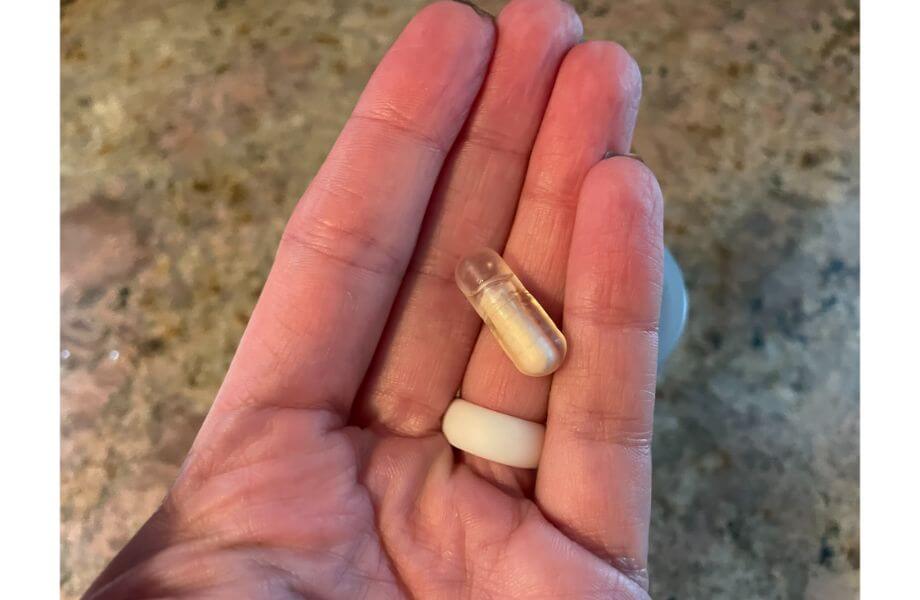
Imbalances in the gut, known as dysbiosis, have been linked to several mental illnesses, including anxiety and depression5.
Disease Prevention
Emerging research1 links poor gut health to a variety of chronic conditions, including:
- Obesity
- Heart disease
- Type 2 diabetes
- Inflammatory bowel disease
- Irritable bowel syndrome
Maintaining good gut health may help reduce your risk of developing these issues over time. The good news is (yep, there’s more of it!), with the right foods and habits, you can help it thrive.
Signs of an Unhealthy Gut
Some signs of poor gut health are more obvious, such as digestive issues. However, because your gut plays a central role in overall well-being, symptoms can manifest in ways you may not associate with gut health.
Signs of an unhealthy gut7 include:
- Digestive issues such as bloating, gas, abdominal pain, constipation, diarrhea, or heartburn
- Changes in bowel habits
- Persistent nausea or vomiting
- Unexplained weight loss
- Frequent fatigue or disrupted sleep
- Mood shifts, including low mood and increased stress
- Recurring infections or illness (like colds)
- Nutrient deficiencies
If you experience digestive or unusual symptoms, consult a gastroenterologist or healthcare provider. They can help identify any underlying issues and create a tailored plan to support your gut, many of which may align with the tips shared below.
Ways to Improve Your Gut Health
Improving your gut health requires a holistic approach that prioritizes whole foods, hydration, stress management, quality sleep, and regular physical activity. Let’s take a closer look at each element.
Focus on Whole Food Sources
Supporting a healthy gut starts with whole, nutrient-dense foods rather than ultra-processed products—like soft drinks and savory snacks—abundant in the Western Diet8.
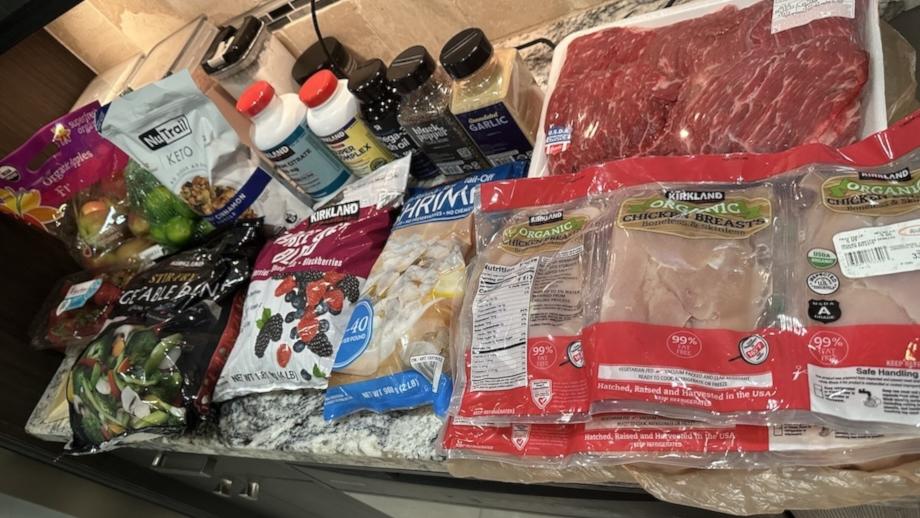
For example, many whole foods provide dietary fiber, which your gut bacteria break down through fermentation to produce short-chain fatty acids9 (SCFAs) such as butyrate, propionate, and acetate. SCFAs can help regulate appetite, blood sugar, and inflammation, among other health benefits10.
Whole food sources to prioritize include:
- Probiotic-rich and fermented foods11, including yogurt, kefir, and sauerkraut
- Prebiotic food sources, such as bananas, oats, asparagus, and apples
- Dietary fiber from plant sources, like fruits and veggies (especially with their peels), whole grains, and legumes
- Polyphenol-rich foods, including green tea, olive oil, and red wine
On the other hand, processed foods—especially those with artificial sweeteners like aspartame—may disrupt your microbiome’s balance1.
Mix Up Your Menu
As the saying almost goes, “Variety is the spice of good gut health!” While lower microbiome diversity has been linked to gut dysbiosis1, a 2016 review12 emphasizes a healthy gastrointestinal microbiome depends on dietary diversity.
The best part? Adding variety doesn’t have to be complicated. Here are a few easy ways to mix things up:
- Rotate your prebiotic fiber sources, such as topping Greek yogurt with bananas one day, and then try oats or chia seeds the next.
- Pick a new veggie or fruit color with each meal, such as red bell pepper, leafy greens, and orange, well, oranges.
- Switch up your whole grains beyond brown rice: try quinoa, barley, or farro.
- Explore new fermented foods, including kimchi, miso, or kombucha.
Consider a Probiotic Supplement
Probiotics—often called “good bacteria”—are live microorganisms that support gut health and may also benefit the body through immune modulation and production of bioactive compounds. Common strains include Lactobacillus, Bifidobacterium, Saccharomyces, and Streptococcus, with each offering unique health benefits.
Research1 links probiotic supplementation to improvements in conditions, including necrotizing enterocolitis, respiratory infections, eczema in children, and even reduced inflammation in type 2 diabetes.
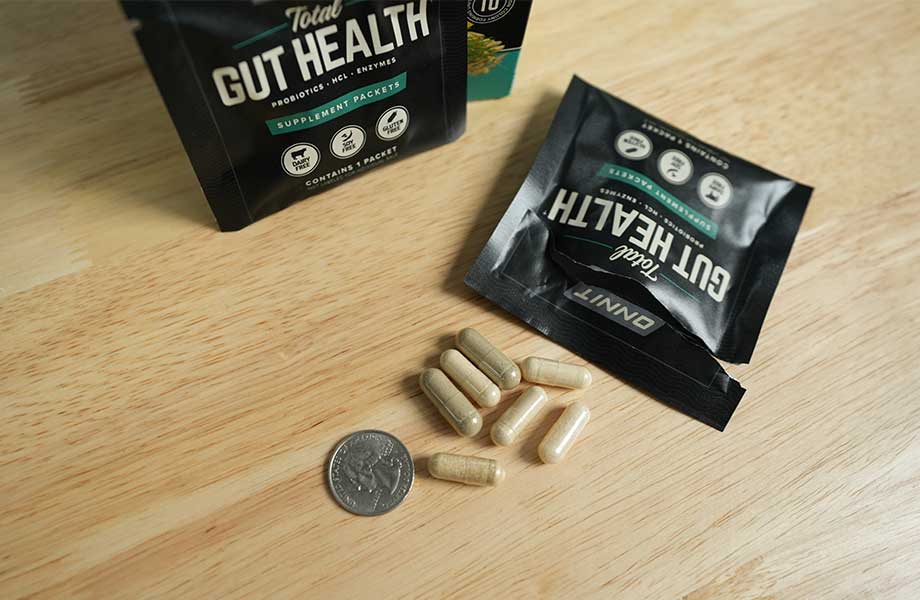
You don’t have to solely rely on the best probiotic supplements, though. Probiotic foods include yogurt, kefir, kimchi, sauerkraut, kombucha, miso, and tempeh. Some greens powders and apple cider vinegar products may also be sources.
Don’t Forget Prebiotic Foods
Prebiotics and probiotics may appear similar, and both do support gut health, but they serve distinct roles within the entire operation. Probiotics are live, beneficial bacteria in your digestive tract, while prebiotics are plant fibers your body can’t digest—yet your gut bacteria feed on them1.
These fibers can help probiotics thrive, promoting a balanced and healthy gut microbiome. You can get both prebiotics and probiotics through food or supplements.
Prebiotics are sourced in plant-based foods, including fruits, vegetables, whole grains, legumes, nuts, and seeds. Some of the best prebiotic foods include:
- Asparagus
- Bananas
- Barley
- Garlic
- Jerusalem artichoke
- Leeks
- Legumes
- Lentils
- Oats
- Onions
- Potatoes
Ensure Adequate Hydration
Hydration does more than quench your thirst—it supports digestion, especially when you’re upping your fiber intake. Plus, research13 suggests water may play a role in supporting a healthy gut microbiome.
How much water you need daily varies based on activity levels and medical factors, but general guidelines suggest about 125 ounces (15 cups) for men and 90 ounces (11.5 cups) for women. If that sounds like a lot, start with a more manageable goal of eight cups a day.
Monitor Your Stress Levels
Stress14 doesn’t just affect your mood—it can disrupt your gut, too. Short and long-term stress can alter the balance of your gut microbiota, increase gut permeability (often referred to as “leaky gut”), and trigger inflammation.
Stress doesn’t just affect your mood—it can also impact the way you eat and how your body processes food. It may lead to more impulsive, less nutritious choices while interfering with fat oxidation, insulin regulation, and resting energy expenditure—all of which can take a serious toll on gut health over time.
Help manage stress and support a healthier gut with these tips:
- Prioritize consistent sleep and regular exercise.
- Incorporate mindfulness practices, breathwork, or journaling.
- Choose nutrient-dense, high-fiber foods instead of stress-driven snacks.
- Foster meaningful relationships.
Small, consistent habits can make a big difference in breaking the stress-gut cycle.
Get Enough Sleep
Sleep and gut health may have a two-way relationship—research6 suggests that good sleep can support a healthier gut, while a diverse gut microbiome might help improve sleep quality. Either way, prioritizing sleep is key for overall well-being.

To support long-term sleep quality, focus on practicing good sleep hygiene15 with these actionable tips:
- Aim for 7 to 9 hours of sleep each night.
- Stick to a consistent sleep/wake schedule.
- Create a relaxing bedtime routine.
- Engage in regular exercise, which is also beneficial for gut health, as discussed below.
- Limit caffeine, alcohol, and heavy meals in the evening.
- Reduce screen time and bright light exposure before bed.
Exercise Regularly
A 2023 meta-analysis16 reveals exercise can have a positive impact on the gut microbiota in healthy individuals and those with medical conditions.

Current guidelines recommend that healthy adults aim for at least 150 minutes of aerobic exercise each week, along with two or more strength-training sessions. But make sure you make a workout plan you can stick for long-term benefits (and gains).
How to Improve Your Gut Health: Final Thoughts
Improving your gut health may feel overwhelming, but here’s the good news: small, actionable steps can make a big difference! Let’s recap the importance of gut health and how to enhance it:
- The gut microbiome plays a crucial role in digestion, immunity, nutrient absorption, mental health, and overall well-being.
- Eating a diverse range of plant-based, probiotic, and prebiotic-rich foods can support a balanced microbiome. Pre- and probiotic supplementation can also help.
- Regular exercise, staying hydrated, managing stress, and getting quality sleep supports good gut health.
How to Improve Your Gut Health: FAQs
What is the fastest way to improve gut health?
Achieving and maintaining good health requires time and consistency, but research17 indicates that the gut microbiome can respond quickly to dietary changes. By prioritizing a high-quality, varied diet and embracing a well-rounded lifestyle—including regular exercise, sufficient sleep, and effective stress management—you can support your gut and overall health more effectively.
What are some signs of an unhealthy gut?
Poor gut health often manifests as digestive symptoms, including bloating, gas, and constipation. But because the gut plays a central role in overall health, the signs can also be more subtle or unexpected, including fatigue, mood changes, frequent illnesses, and nutrient deficiencies.
Is apple cider vinegar good for gut health?
Apple cider vinegar18 (ACV) may offer some gut-friendly compounds like polyphenols and, in some cases, probiotic bacteria—but it’s not a reliable probiotic source. Microorganisms in fermented ACV19 may contain live microorganisms, such as Lactobacillus, although the amounts can vary. Plus, research on their impact at such low levels is limited.
What are some food options to help improve gut health?
If you want to improve gut health, focus on whole, minimally processed foods rich in probiotics, prebiotics, dietary fiber, and polyphenols, including these examples:
Probiotics: yogurt, kefir, sauerkraut, and kimchi (look for live and active cultures)
Prebiotics: bananas, garlic, and onions (feed beneficial gut bacteria)
Dietary fiber: fruits, veggies, whole grains, nuts, and seeds (support colonic bacterial fermentation and digestion)
Polyphenols: berries, dark chocolate, extra virgin olive oil (promote gut health)
Varying these sources in your diet can also help create a healthier gut microbiome12.
References
- Valdes, A. M., Walter, J., Segal, E., & Spector, T. D. (2018). Role of the gut microbiota in nutrition and health. BMJ (Clinical research ed.), 361, k2179. https://doi.org/10.1136/bmj.k2179
- Thursby, E., & Juge, N. (2017). Introduction to the human gut microbiota. The Biochemical Journal, 474(11), 1823–1836. https://doi.org/10.1042/BCJ20160510
- Hadadi, N., Berweiler, V., Wang, H., & Trajkovski, M. (2021). Intestinal microbiota as a route for micronutrient bioavailability. Current Opinion in Endocrine and Metabolic Research, 20, 100285. https://doi.org/10.1016/j.coemr.2021.100285
- Hou, K., Wu, Z. X., Chen, X. Y., Wang, J. Q., Zhang, D., Xiao, C., Zhu, D., Koya, J. B., Wei, L., Li, J., & Chen, Z. S. (2022). Microbiota in health and diseases. Signal Transduction and Targeted Therapy, 7(1), 135. https://doi.org/10.1038/s41392-022-00974-4
- Clapp, M., Aurora, N., Herrera, L., Bhatia, M., Wilen, E., & Wakefield, S. (2017). Gut microbiota’s effect on mental health: The gut-brain axis. Clinics and Practice, 7(4), 987. https://doi.org/10.4081/cp.2017.987
- Smith, R. P., Easson, C., Lyle, S. M., Kapoor, R., Donnelly, C. P., Davidson, E. J., Parikh, E., Lopez, J. V., & Tartar, J. L. (2019). Gut microbiome diversity is associated with sleep physiology in humans. PloS One, 14(10), e0222394. https://doi.org/10.1371/journal.pone.0222394
- Berg S. What doctors wish patients knew about improving gut health. American Medical Association. Published March 17, 2023. https://www.ama-assn.org/delivering-care/public-health/what-doctors-wish-patients-knew-about-improving-gut-health#
- Shi Z. (2019). Gut Microbiota: An Important Link between Western Diet and Chronic Diseases. Nutrients, 11(10), 2287. https://doi.org/10.3390/nu11102287
- Portincasa, P., Bonfrate, L., Vacca, M., De Angelis, M., Farella, I., Lanza, E., Khalil, M., Wang, D. Q., Sperandio, M., & Di Ciaula, A. (2022). Gut Microbiota and Short Chain Fatty Acids: Implications in Glucose Homeostasis. International Journal of Molecular Sciences, 23(3), 1105. https://doi.org/10.3390/ijms23031105
- Xiong, R. G., Zhou, D. D., Wu, S. X., Huang, S. Y., Saimaiti, A., Yang, Z. J., Shang, A., Zhao, C. N., Gan, R. Y., & Li, H. B. (2022). Health Benefits and Side Effects of Short-Chain Fatty Acids. Foods (Basel, Switzerland), 11(18), 2863. https://doi.org/10.3390/foods11182863
- Leeuwendaal, N. K., Stanton, C., O’Toole, P. W., & Beresford, T. P. (2022). Fermented Foods, Health and the Gut Microbiome. Nutrients, 14(7), 1527. https://doi.org/10.3390/nu14071527
- Heiman, M. L., & Greenway, F. L. (2016). A healthy gastrointestinal microbiome is dependent on dietary diversity. Molecular Metabolism, 5(5), 317–320. https://doi.org/10.1016/j.molmet.2016.02.005
- Vanhaecke, T., Bretin, O., Poirel, M., & Tap, J. (2022). Drinking Water Source and Intake Are Associated with Distinct Gut Microbiota Signatures in US and UK Populations. The Journal of Nutrition, 152(1), 171–182. https://doi.org/10.1093/jn/nxab312
- Madison, A., & Kiecolt-Glaser, J. K. (2019). Stress, depression, diet, and the gut microbiota: human-bacteria interactions at the core of psychoneuroimmunology and nutrition. Current Opinion in Behavioral Sciences, 28, 105–110. https://doi.org/10.1016/j.cobeha.2019.01.011
- Baranwal, N., Yu, P. K., & Siegel, N. S. (2023). Sleep physiology, pathophysiology, and sleep hygiene. Progress in Cardiovascular Diseases, 77, 59–69. https://doi.org/10.1016/j.pcad.2023.02.005
- Boytar, A. N., Skinner, T. L., Wallen, R. E., Jenkins, D. G., & Dekker Nitert, M. (2023). The Effect of Exercise Prescription on the Human Gut Microbiota and Comparison between Clinical and Apparently Healthy Populations: A Systematic Review. Nutrients, 15(6), 1534. https://doi.org/10.3390/nu15061534
- David, L. A., Maurice, C. F., Carmody, R. N., Gootenberg, D. B., Button, J. E., Wolfe, B. E., Ling, A. V., Devlin, A. S., Varma, Y., Fischbach, M. A., Biddinger, S. B., Dutton, R. J., & Turnbaugh, P. J. (2014). Diet rapidly and reproducibly alters the human gut microbiome. Nature, 505(7484), 559–563. https://doi.org/10.1038/nature12820
- El Abdali, Y., Saghrouchni, H., Kara, M., Mssillou, I., Allali, A., Jardan, Y. A. B., Kafkas, N. E., El-Assri, E. M., Nafidi, H. A., Bourhia, M., Almaary, K. S., Eloutassi, N., & Bouia, A. (2023). Exploring the Bioactive Compounds in Some Apple Vinegar Samples and Their Biological Activities. Plants (Basel, Switzerland), 12(22), 3850. https://doi.org/10.3390/plants12223850
- Cousin, F. J., Le Guellec, R., Schlusselhuber, M., Dalmasso, M., Laplace, J. M., & Cretenet, M. (2017). Microorganisms in Fermented Apple Beverages: Current Knowledge and Future Directions. Microorganisms, 5(3), 39. https://doi.org/10.3390/microorganisms5030039




